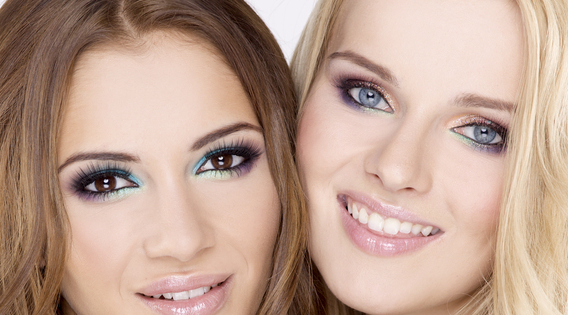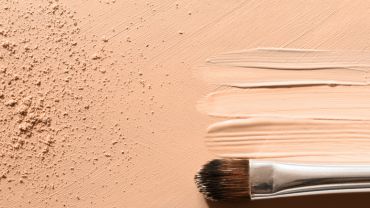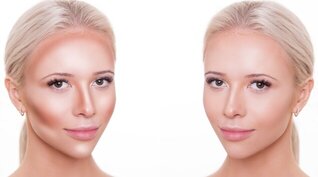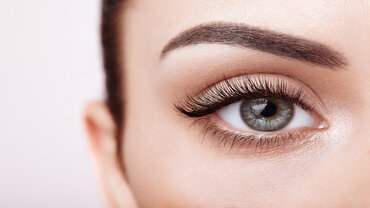If you’re wondering what does non comedogenic mean?
You’re in the right place
If you’re like most women, you have heard the term but aren’t exactly sure if or why you want this for makeup.
To help, we have crafted this blog to walk through:
• What non comedogenic makeup truly means (and what makeup does NOT qualify)
• How to search through the lists of “try this!” on the internet
• An easy way to know a product is NOT ideal
First, let’s define non comedogenic makeup
According to Joshua Zeichner, MD, director of cosmetic and clinical research at Mount Sinai Hospital, “'Non-comedogenic' is a term used to describe a product that will not block pores and promote acne”.
Essentially, any foundation that has been crafted to not clog up pores or contribute to pimples is referenced as non comedogenic.
If you’re ready to find the right foundation and makeup that helps soothe, prevent or diminish acne, let’s read on.
Who should use non comedogenic options?
This kind of makeup is ideal for anyone with acne prone or sensitive skin. This non-clogging type of product makes a massive difference to skin that tends to break out or get irritated.
It is also fantastic for both dry and oily skin types because it avoids the chemicals that affect both skin types poorly - and only has ingredients that help them be dry but flaky, moisturized by not oily.
Heard this other important (but scary)
Acnegenic ingredients are the quick triggers for breakouts. This would be something that goes on and sits on your face and - overnight - you can see skin issues.
What’s almost more startling are the comedogenic ingredients.
Why?
Comedogenic ingredients are the type that can sneak up and cause acne over a long period. Build up could happen over several months - and then lead to breakouts.
Because the process can happen over months, bumps may start popping up and - understandably - you would have no idea where the acne came from.
Stepping away from comedogenic is going to help - and here’s how to do it.
What ingredients are non comedogenic (and which are not)
When looking to switch to non comedogenic foundation and other products, we have to confirm that products may still have elements like oils. For example, there are essential oils that are considered non comedogenic - even though many of us have been taught to run away from the term oil.
Why?
While some oils clog the skin, other oils help to nourish the face and hydrate skin. When nourished, the skin is able to replenish healthy cells and experience less irritation from dryness.
What ingredients to avoid (including healthy-sounding vegan ones)
There are chemical-sounding ingredients to avoid, as well as items that SOUND healthy that are clogging to acne-prone skin. Often, it is good to avoid these ingredients that are pore-clogging:
• Algae
• Seaweed
• Coconut butter
• Coconut oil
• Sulfated jojoba oil (non-sulfated can be okay!)
• Sodium Chloride
• Terms that “End in -ate” elements like Isopropyl Isostearate, Isopropyl Myristate & Isopropyl Palmitate
The best non comedogenic makeup ingredients
While coconut oil can be great for cooking, as shared above, this oil can be hazardous to sitting on skin for long periods - slowly building up and causing more and more acne.
Thankfully, there are other fantastic natural-based foundations and makeup products with ingredients safe on acne-prone skin. Examples include:
• Willow bark extract
• Zink Oxide
• Minerals
• Witch hazel extract
• Camomile flower-extract
• Safflower oil
The #1 mistakes when choosing makeup
Most people pick out makeup by looking at reviews, pricing and the label - especially one with a flashy, known or designer brand your friends or family love.
The issue is that these factors do not take into account the list of ingredients.
No matter how expensive or fancy branding is, if a makeup has chemicals or seaweed or other comedogenic ingredients, that can be a very poor makeup choice for someone prone to breakouts. And because the build up can happen over months, most people don’t even realize that it’s the makeup they bought 3 months before...causing these issues.
The best way to find the RIGHT non-comedogenic foundation
In addition to reading ingredients, making sure they align with the lists above, here are other ways to determine what makeup is going to be a fantastic fit for you.
• Notice the NUMBER of ingredients
In addition to looking at what is being used, you’ll see some makeups (even non comedogenic foundation) have 6 ingredients...while others have 20, 40. The simpler a product, the simpler your skin will be able to handle it.
• Sample the foundation to see how your skin feels
Makeup companies that truly believe in their product create samples for a low cost, so you can experience them for yourself.
The perfect step is to see how your skin feels (light? heavy? fresh?) after trying a sample of a natural, non comedogenic makeup.
• Read real customer reviews
When we say read reviews, we do not mean articles by international publications. Remember that many of these websites have been paid or had products sent to staff to get a spot in the piece.
The most important thing is to read real “verified purchase” reviews from the website or 3rd party sellers.
Remember this, above all else
When selecting a non comedogenic makeup, try to keep the ingredient list as low as possible. This is one of the absolute top indicators that the makeup is in the purest, most gentle form possible.
Try a → All natural, vegan (short ingredient list) makeup

 Dutch
Dutch German
German





